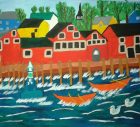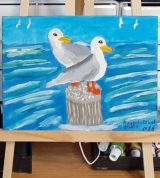Polar Bear Names.
Where do Polar Bears live? Are there Polar Bears in Greenland?
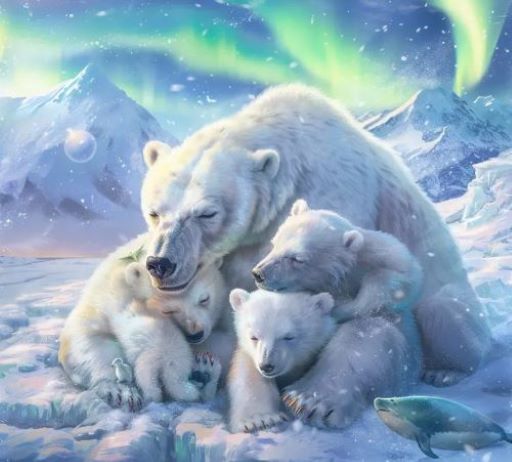
POLAR BEAR NAMES in Greenland, Scandinavia, Canada, Alaska & Siberia
“Polar bears rock!” It’s a common Canadian sentiment, eh? We love ’em so much that there’s a movement here in the Great White North to give it yet another name. “Canada’s National Animal.”
The Polar Bear lives where?
Polar Bears live in the High Arctic. Around the world. From Canada, and eastward across Greenland, Scandinavia, Siberia (in eastern Russia, along the Arctic Ocean coast) and Alaska. They’ve got an impressive number of names.
Discover the fascinating array of names given to the big white bear. Names that reflect its significance in various cultures. And scientific communities. This majestic creature is known scientifically as Ursus Maritimus. It holds a revered place in the folklore and languages of the Arctic region people.
Here, from Nature writer Lisa Jeeves is a Guest Blog on Polar Bears.
“The Many Names of the Polar Bear: A Cultural and Scientific Exploration” by Lisa Jeeves
The polar bear is a symbol of the Arctic’s wild majesty. It’s not only a fascinating subject for wildlife enthusiasts but also a critical study in evolutionary adaptation. The Arctic region derives its name from the Greek word arktos, meaning bear. Which hints at the deep connection between this environment and its most iconic inhabitant. The entire Arctic region at the top of the world is named after the fierce white bear that lives there.
Observing these magnificent animals in their natural habitat offers more than just a thrilling adventure. It provides insight into a complex ecosystem where the polar bear reigns as a formidable predator.
Polar Bear Names
Around the Northern seas, this great white bear has garnered more than a few names.
Ursus Maritimus: The Sea Bear
The polar bear was first termed “Ursus Maritimus” by C.J Phipps in 1774. In his work, “A Voyage Towards The North Pole.” This Latin name translates to “Sea Bear.” A nod to the animal’s strong swimming abilities. And its primary habitat along the ice edges and in the cold seas of the Arctic.
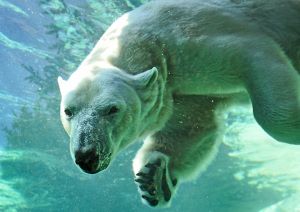
Naturalists classify polar bears as marine mammals. They are strong swimmers who can paddle up to six miles per hour. Their wide paws, strong claws, and slightly webbed feet help them move across — and under — the ice.
Greek and Canadian Names
Thalarctos: A Brief Nomenclatural Change
In the 19th century, the name briefly changed to Thalarctos. Which derived from Greek words “thalasso” (sea) and ‘arctos” (bear), emphasizing its connection to the ocean. However, by 1971, the scientific community reverted to the original nomenclature, Ursus Maritimus. This remains its recognized scientific name today.
Nanuq: Inuit People and the Polar Bear
The Inuit, indigenous people of the Canadian Arctic, call it “Nanuq,” symbolizing deep respect. Another poetic name used by the Inuit is “Pihoqahiak.” Meaning “the ever-wandering one,” highlighting the bear’s constant movement across vast icy landscapes. The Inuit speak of the white bear with “Reverence and Poetry.”
European and Russian Names
In Russia, the Arctic bear is known as “beliy medved’ or “white bear.” Scandinavians refer to it as “Isbjorn,” or “Ice Bear” — ” a direct reference to its icy habitat. These names reflect the bear’s prominent physical characteristic and its environment.
Mythological and Respectful Names by Other Cultures
- Norse Mythology: Known as the ‘White Sea Deer,’ ‘Seal’s Dread,’ and ‘Whale’s Bane,’ among others. These names depict the white bear as a powerful and mystical creature.
- Old Icelandic: their name for the Arctic bear was ‘Bjarndýri.’
- Sámi People: They call it ‘God’s Dog’ or ‘Old Man in the Fur Cloak,’ avoiding its real name out of respect and fear.[1]
- Greenland: Known as ‘Tornassuk,’ or ‘Master of Helping Spirits.’
- Siberian Tribes: The Ket people refer to it as ‘Orqoi,” meaning ‘Grandfather.’ Indicating a venerable status within their culture.
Observing Polar Bears in the Wild
Are you interested in observing these magnificent creatures up close? Arctic bear tours are available in Churchill, Manitoba. Churchill is known as the “Polar Bear Capital of the World.” These tours not only offer a chance to see the northern bears in their natural habitat. But also raise awareness about the importance of conservation efforts.
“Endangered Species” — Conservation Status: A Call for Awareness
Despite their revered status in folklore and their adaptability, the Arctic bears are facing significant threats due to climate change. The melting of Northern ice reduces their habitat and hunting grounds. This critically impacts their population.
According to the World Wildlife Fund, there are currently only 22,000 to 31,000 sea bears left in the wild. Conservation efforts are crucial to ensure that future generations may also know the powerful white bear. Not just by the many names it carries, but as a thriving species in its natural habitat.
For more detailed information on sea bear conservation efforts, visit World Wildlife Fund and Polar Bears International.
Understanding the diverse names and cultural significance of the polar bear enriches the experience of those fortunate enough to observe these magnificent creatures in the wild. It also highlights the importance of global efforts required to conserve their populations and habitats.
Thanks, Lisa Jeeves.
🍁 SEE one of my most popular posts: What Is Canada’s National Animal? The Polar Bear!
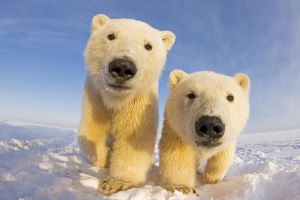
[1] “The Sámi are the traditionally Sámi-speaking indigenous people inhabiting the region of Sápmi. Which today encompasses large northern parts of Norway, Sweden, Finland, and of the Kola Peninsula in Russia. The region of Sápmi was formerly known as Lapland. A place renowned for its herds of semi-domesticated reindeer. And the Sámi have historically been known in English as Lapps or Laplanders…” https://en.wikipedia.org/wiki/Sámi_people
Lisa Jeeves is a writer of well-written Wildlife articles. Among her articles are “Physical Characteristics of the Jaguar.” “Galapagos Sea Lions: Sheep Dogs of the Ocean.” And “Look No Feather for Brilliant Birdwatching Holidays.” Source: Free Guest Posting Articles.
TAGS: Polar Bear Names. Polar bears habitat. Are there Polar Bears in Canada? Does Greenland have polar bears?





